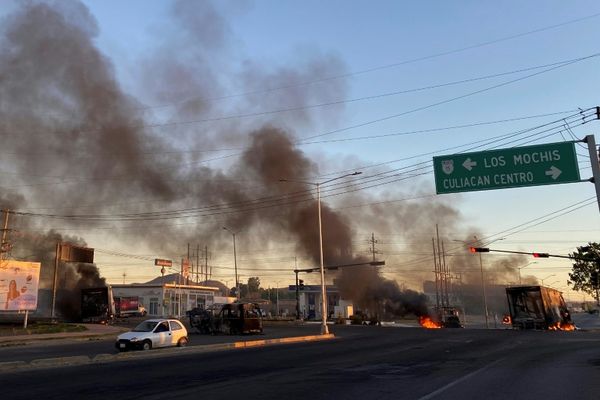Federal Reserve Bank of Minneapolis President Neel Kashkari made clear Wednesday that he will push for raising interest rates at least three more times — for a total of about a percentage point — as a voting member this year on the Fed's rate-setting committee.
In an essay published on the Minneapolis Fed's website, Kashkari also offered more thoughts on why he and other policymakers initially misread how high inflation would go and how long it would last.
While there's increasing evidence inflation may have peaked, Kashkari wrote that it's too soon to "definitely declare" it has done so.
"It will be appropriate to continue to raise rates at least at the next few meetings until we are confident inflation has peaked," he said.
Making it more expensive to borrow money is expected to cool the economy enough to slow the recent rapid growth in the cost of goods and services. But critics of continued rate hikes say that could be an over-correction, potentially triggering a recession.
Kashkari has recommended raising rates to 5.4% this year, he disclosed in the essay. That was higher than the median projection of 5.1% among committee members at the Fed's December meeting. But a couple unnamed officials suggested going even higher to 5.6%.
The current federal funds rate is between 4.25% and 4.5%, the result of series of aggressive rate hikes in 2022 as the Fed has ramped up its fight against inflation. A year ago, the federal funds rate was nearly zero.
"Once we see the full effects of the tightened policy, we can then assess whether we need to go higher or simply remain at that peak level for longer," Kashkari wrote Wednesday. "To be clear, in this phase any sign of slow progress that keeps inflation elevated for longer will warrant, in my view, taking the policy rate potentially much higher."
Before the pandemic and this recent period of high inflation, Kashkari had a reputation of being one of the Fed's biggest doves, often opposing interest rates increases.
But in the last year, he has become increasingly hawkish on interest rates, recommending bigger increases over time than many other Fed policymakers.
The rate-setting Federal Open Market Committee has 12 voting members, including eight permanent voters. The other four voting members, which includes Kashkari this year, rotate every year among the 11 regional bank presidents.
Once the higher interest rates have had time to work their way through the economy, Kashkari said Fed policymakers should be careful to only start lowering rates once they're sure inflation is well on its way back down to the target of 2%. He noted that in the 1970s the Fed made the mistake of cutting rates prematurely only to have inflation flare back up again.
"That would be a costly error, so the move to cut rates should only be taken once we are convinced that we have truly defeated inflation," he said.
Kashkari said he's also been wrestling with why forecasters and Fed officials, including himself, initially misjudged the run-up in inflation in 2021, thinking it would be "transitory."
He noted that in prevailing economic models such as the Phillips curve, inflation is thought to be primarily driven by unemployment and changes in long-run inflation expectations. But that hasn't been the case most recently.
"From what I can tell, our models seem ill-equipped to handle a fundamentally different source of inflation," he said, "specifically, in this case, surge pricing inflation."
Making an analogy to the way Uber's prices surge in times of high demand, he used the term "surge pricing inflation" to describe the current economy. High demand has pushed up prices and corporate profits — and to a lesser extent, wages — because of constrained supplies of goods and labor.
Kashkari acknowledged that his staff pushed back at his theory and pointed instead to unexpected supply and demand shocks such as the war in Ukraine and various COVID-19 waves.
But even accounting for those shocks, Kashkari said he doesn't think the current economic models would have come close to forecasting how high inflation has risen in the last year.
"If we can deepen our analytical capabilities surrounding other sources and channels of inflation, then we might be able to incorporate whatever lessons we learn into our policy framework going forward."







